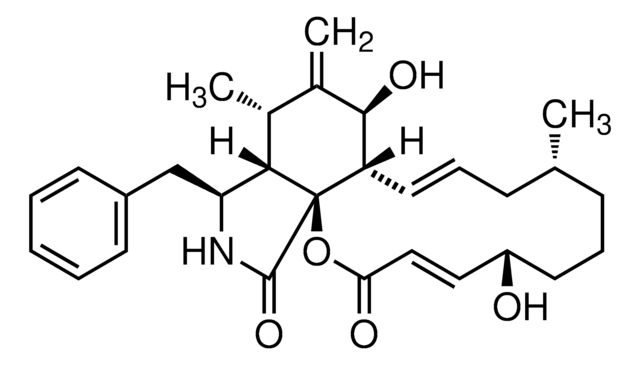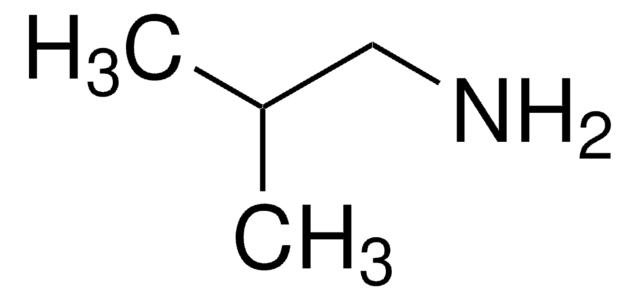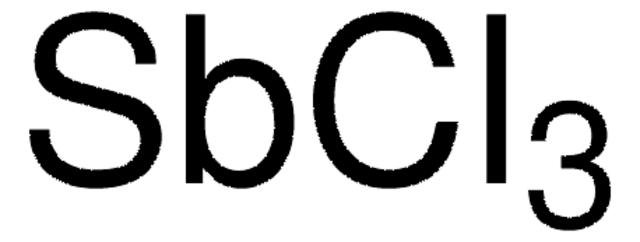383082
Cadmium sulfate
ACS reagent, ≥99.0%
About This Item
Productos recomendados
grado
ACS reagent
Análisis
≥99.0%
formulario
powder or crystals
idoneidad de la reacción
reagent type: catalyst
core: cadmium
impurezas
≤0.005% insolubles
pérdida
≤1.0% loss on drying
solubilidad
water: soluble
trazas de anión
NO3- and NO2-: ≤0.003%
chloride (Cl-): ≤0.001%
trazas de catión
Ca: ≤0.01%
Cu: ≤0.002%
Fe: ≤0.001%
K: ≤0.02%
Na: ≤0.05%
Pb: ≤0.003%
Zn: ≤0.05%
cadena SMILES
[Cd++].[O-]S([O-])(=O)=O
InChI
1S/Cd.H2O4S/c;1-5(2,3)4/h;(H2,1,2,3,4)/q+2;/p-2
Clave InChI
QCUOBSQYDGUHHT-UHFFFAOYSA-L
¿Está buscando productos similares? Visita Guía de comparación de productos
Descripción general
Aplicación
It may be used as cadmium source in the synthesis of the following:
- cadmium sulfide (CdS) thin films
- cadmium carbonate (CdCO3) microcrystals
- cadmium sulfide-montmorillonite nanocomposites
- cadmium sulfate phases
- cadmium sulfide (CdS) quantum dots
Palabra de señalización
Danger
Frases de peligro
Consejos de prudencia
Clasificaciones de peligro
Acute Tox. 2 Inhalation - Acute Tox. 3 Oral - Aquatic Acute 1 - Aquatic Chronic 1 - Carc. 1B - Muta. 1B - Repr. 1B - STOT RE 1
Órganos de actuación
Bone,Kidney,Respiratory system
Código de clase de almacenamiento
6.1B - Non-combustible acute toxic Cat. 1 and 2 / very toxic hazardous materials
Clase de riesgo para el agua (WGK)
WGK 3
Punto de inflamabilidad (°F)
Not applicable
Punto de inflamabilidad (°C)
Not applicable
Certificados de análisis (COA)
Busque Certificados de análisis (COA) introduciendo el número de lote del producto. Los números de lote se encuentran en la etiqueta del producto después de las palabras «Lot» o «Batch»
¿Ya tiene este producto?
Encuentre la documentación para los productos que ha comprado recientemente en la Biblioteca de documentos.
Los clientes también vieron
Nuestro equipo de científicos tiene experiencia en todas las áreas de investigación: Ciencias de la vida, Ciencia de los materiales, Síntesis química, Cromatografía, Analítica y muchas otras.
Póngase en contacto con el Servicio técnico













